HONDA CR-V 2012 User Manual
2012 CR-V
Owner’s Manual (Unlinked)
This document does not contain hyperlinks and may be formatted for printing instead of web use. This is due to changes in content and specifications of the vehicle that happen throughout the model year. This manual will be replaced with a hyperlinked version at the end of the model year.
© 2011 American Honda Motor Co., Inc. - All Rights Reserved |
P/N 00X31-T0A-6000 |

This owner’s manual should be considered a permanent part of the vehicle and should remain with the vehicle when it is sold.
This owner’s manual covers all models of your vehicle. You may find descriptions of equipment and features that are not on your particular model.
Images throughout this owner’s manual (including the front cover) represent features and equipment that are available on some, but not all, models. Your particular model may not have some of these features.
This owner’s manual is for vehicles sold in the United States and Canada.
The information and specifications included in this publication were in effect at the time of approval for printing. Honda Motor Co., Ltd. reserves the right, however, to discontinue or change specifications or design at any time without notice and without incurring any obligation.
2 |
Safe Driving P. 25 |
|
|
For Safe Driving P. 26 |
Seat Belts P. 31 |
Airbags P. 39 |
|
|
|
|
|
2 |
Instrument Panel P. 69 |
|
|
Indicators P. 70 |
Gauges and Displays P. 79 |
|
|
2 Controls P. 97
Setting the Clock P. 98 Locking and Unlocking the Doors P. 100
Opening and Closing the Moonroof* P. 116
Adjusting the Seats P. 128
Climate Control System* P. 151
2 |
Features P. 155 |
|
|
Audio System P. 156 |
|
Audio System Basic Operation P. 159 |
|
General Information on the Audio System P. 210 |
|||
|
|
|
|
2 |
Driving P. 245 |
|
|
Before Driving P. 246 |
Towing a Trailer P. 251 |
||
Parking Your Vehicle P. 277 Multi-View Rear Camera* P. 278 |
|||
|
|
|
|
2 |
Maintenance P. 285 |
|
|
Before Performing Maintenance P. 286 |
Maintenance Minder™ P. 289 |
||
Checking and Maintaining Wiper Blades P. 316
Remote Control and Wireless Headphone Care* P. 331
2 Handling the Unexpected P. 339
Tools P. 340 |
If a Tire Goes Flat P. 341 |
Overheating P. 351 |
Indicator, Coming On/Blinking P. 353 |
2 Information P. 363
Specifications P. 364 |
Identification Numbers P. 366 |
Emissions Testing P. 369 |
Warranty Coverages P. 371 |
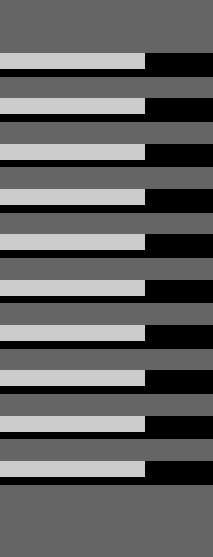
|
|
|
Child Safety P. 54 |
Exhaust Gas Hazard P. 67 |
Safety Labels P. 68 |
|
|
|
|
|
|
|
|
|
|
|
|
Opening and Closing the Tailgate P. 110 |
Security System P. 112 |
Opening and Closing the Windows P. 114 |
Operating the Switches Around the Steering Wheel P. 117 |
Adjusting the Mirrors P. 126 |
|
Interior Lights/Interior Convenience Items P. 138 |
Heating and Cooling System* P. 148 |
|
|
|
|
|
|
|
Rear Entertainment System* P. 193 |
Audio Error Messages P. 205 |
Audio Remote Controls P. 209 |
Bluetooth® HandsFreeLink®* P. 214 |
Compass* P. 243 |
|
|
|
|
|
|
|
Off-Highway Driving Guidelines P. 257 |
When Driving P. 259 |
Braking P. 273 |
Refueling P. 279 |
Fuel Economy P. 282 |
Accessories and Modifications P. 283 |
|
|
|
|
|
|
Maintenance Under the Hood P. 297 |
Replacing Light Bulbs P. 309 |
|
Checking and Maintaining Tires P. 320 |
Battery P. 329 |
Remote Transmitter Care P. 330 |
Heating and Cooling System*/Climate Control System* Maintenance P. 333 |
Cleaning P. 334 |
|
|
|
|
|
|
|
Engine Does Not Start P. 347 |
Jump Starting P. 348 |
Shift Lever Does Not Move P. 350 |
Fuses P. 357 |
Emergency Towing P. 360 |
When You Cannot Open the Tailgate P. 361 |
|
|
|
|
|
|
Contents
Quick Reference Guide P. 2
Safe Driving P. 25
Instrument Panel P. 69
Controls P. 97
Features P. 155
Driving P. 245
Maintenance P. 285
Handling the Unexpected P. 339
Information P. 363
Index P. 375
Devices that Emit Radio Waves P. 367 |
Reporting Safety Defects P. 368 |
Authorized Manuals P. 373 |
Customer Service Information P. 374 |
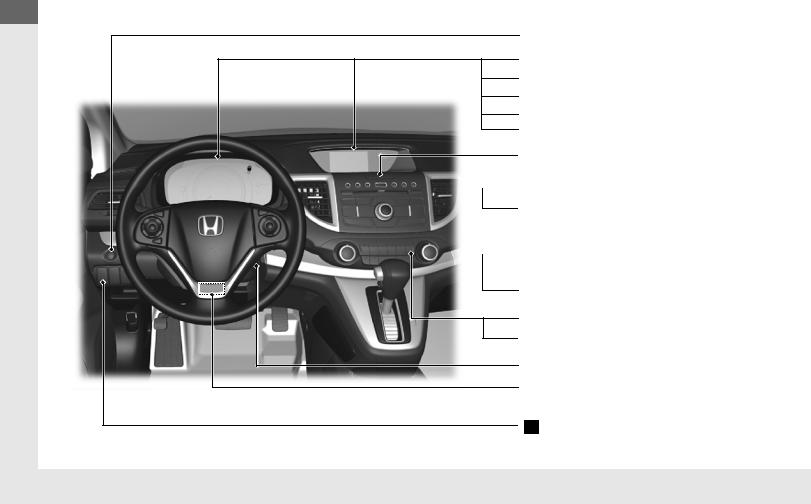
Guide Reference Quick
Visual Index
ECON Button (P 125)
System Indicators (P 70)
Gauges (P 79)
Information Display (P 80)
Multi-Information Display* (P 83)
Audio Display*
Hazard Warning Button
 Audio System (P 156)
Audio System (P 156)
Navigation System*
() See Navigation System Manual
 Heating and Cooling System*
Heating and Cooling System*
(P 148)
Climate Control System* (P 151) |
Rear Window Defogger (P 124) |
Heated Mirror Button* (P 124) |
Ignition Switch (P 117) |
Steering Wheel Adjustments |
(P 125) |
(Vehicle Stability Assist (VSA®) |
System OFF) Button (P 268) |
2

Headlights/Turn Signals (P 118)
Fog Lights* (P 120)


 (SEL/RESET) Knob (P 80)
(SEL/RESET) Knob (P 80)
Brightness Control (P 123)
(Display) Button* (P 83) |
|
||
Wipers/Washers (P 121) |
|
||
Cruise Control Buttons (P 265) |
|
||
Horn (Press an area around |
.) |
||
Navigation System Voice Control Buttons* |
|||
() See Navigation System Manual |
|
||
Bluetooth® HandsFreeLink® System |
|||
Voice Control Buttons* (P 214) |
|
||
MENU Button* (P 86) |
|
||
SOURCE Button (P 86) |
|
||
(+ / (- / |
/ |
Buttons (P 86) |
|
Guide Reference Quick
* Not available on all models |
3 |
|
|
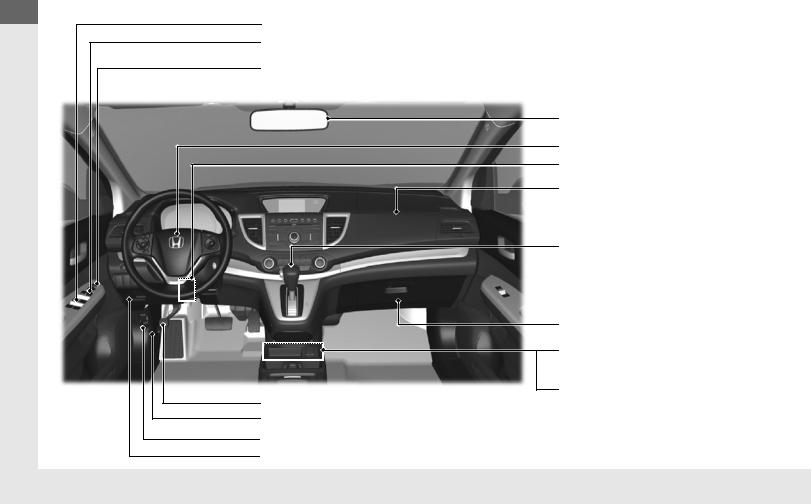
Visual Index
Quick |
Power Window Switches (P 114) |
Power Door Lock Master Switch (P 105) |
|
|
|
Guide Reference |
Door Mirror Controls (P 127) |
|
Parking Brake (P 273) |
Hood Release Handle (P 298) |
Fuel Fill Door Release Handle (P 280) |
Driver’s Pocket |
Rearview Mirror (P 126)
Driver's Front Airbag (P 42)
Interior Fuse Box (P 358)
Passenger's Front Airbag
(P 42)
Shift Lever
Automatic Transmission
(P 262)
Glove Box (P 139)
Accessory Power Socket
(P 141)
Seat Heater Switches*
(P 145)
4

Cargo Area Light (P 138)
Seat Belt (Installing a Child Seat) (P 62)
Seat Belt to Secure a Child Seat (P 63)
Seat Belt with Detachable Anchor (P 36)
Side Curtain Airbags (P 49)
Rear Entertainment System* (P 193)
Ceiling Light (P 138)
Seat Belts (P 31)
Moonroof Switch* (P 116)
Map Lights (P 138)
Sunglasses Holder (P 144)
Sun Visors |
Vanity Mirrors |
Accessory Power Socket* (P 141) |
USB Adapter Cable (P 157) |
Auxiliary Input Jack* (P 157) |
Accessory Power Socket (P 141) |
Console Side Pocket |
Front Seat (P 128) |
Side Airbags (P 46) |
Coat Hook (P 142)
Grab Handle
Rear Seat (P 135)
LATCH to Secure a Child Seat (P 59)
Guide Reference Quick
* Not available on all models |
5 |
|
|

Guide Reference Quick
Visual Index
Maintenance Under the Hood (P 297) |
Audio Antenna (P 158) |
Windshield Wipers (P 121, 316) |
Power Door Mirrors (P 127) |
Door Lock/Unlock Control (P 102) |
Headlights (P 118, 309)
Front Turn Signal/Parking Lights (P 118, 312) |
Side Marker Lights (P 118, 311) |
Tires (P 320, 341) |
Fog Lights* (P 120, 310) |
How to Refuel (P 280) |
High-Mount Brake Light (P 315) |
Rear Wiper (P 122, 318) |
Opening/Closing the Tailgate |
(P 110)
Tailgate Release Button (P 111)
 Multi-View Rear Camera* (P 278)
Multi-View Rear Camera* (P 278)
Brake/Taillights (P 312)
Back-Up Lights (P 312)
Rear Turn Signal Lights (P 312)
Rear Side Marker Lights (P 312)
6

Eco Assist System (P 125)
Ambient Meter
● Changes color to reflect your driving style.
Green: Fuel efficient driving Yellow: Moderate acceleration/ deceleration
White: Aggressive acceleration/ deceleration
● The ambient meter color changes in accordance with your brake or accelerator pedal operation.
ECON Button (P 125)
Helps maximize fuel economy.
ECON Mode Indicator (P 77)
Comes on when the ECON button is pressed.
Guide Reference Quick
* Not available on all models |
7 |
|
|
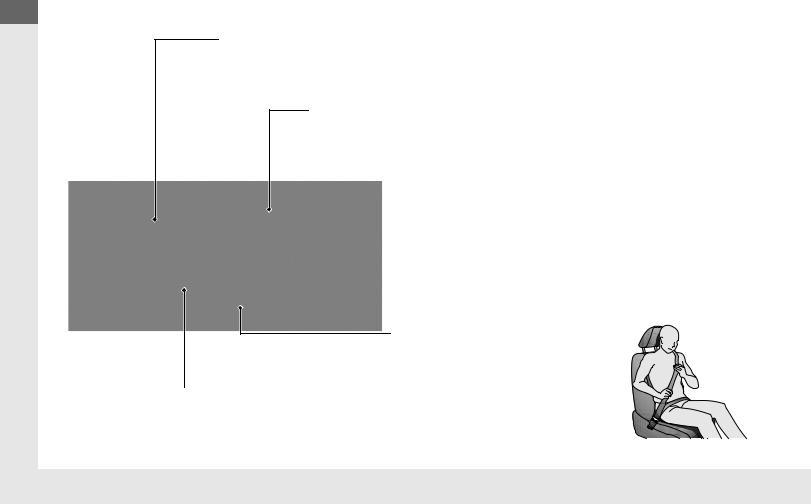
Guide Reference Quick
Safe Driving (P 25)
Airbags (P 39)
●Your vehicle is fitted with airbags to help protect you and your passengers during a moderate-to-severe collision.
Child Safety (P 54)
●All children 12 and younger should be seated in the rear seat.
●Smaller children should be properly restrained in a forward-facing child seat.
●Infants must be properly restrained in a rear-facing child seat.
 Exhaust Gas Hazard (P 67)
Exhaust Gas Hazard (P 67)
●Your vehicle emits dangerous exhaust gases that contain carbon monoxide. Do not run the engine in confined spaces where carbon monoxide gas can accumulate.
Seat Belts (P 31)
● Fasten your seat belt and sit upright well back in the seat.
● Check that your passengers are wearing
their seat belts correctly.
Before Driving Checklist (P 30)
● Before driving, check that the front seats, head restraints, steering wheel, and mirrors have been properly adjusted.
Fasten your lap belt as low as possible.
8

Instrument Panel (P 69)
Gauges (P 79)/Information Display (P 80)/ Multi-Information Display* (P 83)/System Indicators (P 70)
System Indicators
Shift Lever Position Indicator |
Temperature Gauge |
Ambient Meter
|
|
|
|
|
|
|
|
|
|
|
|
|
|
|
|
|
|
|
|
|
|
|
|
|
|
|
|
|
|
|
|
|
|
|
|
|
|
|
|
|
|
|
|
|
|
|
|
|
|
|
|
|
|
|
|
|
|
|
|
|
|
Speedometer |
Security System |
|
Fuel |
||||
Tachometer |
|
||||||||
|
|
|
Alarm Indicator |
Gauge |
|||||
|
|
|
|
|
|||||
System Indicators |
Lights Reminders |
|
U.S.
Canada
System Indicators
AWD System
Indicator*
Turn Signal and
Hazard Warning
Indicators
Electric Power
Steering (EPS)
Indicator
U.S.
Canada
Guide Reference Quick
* Not available on all models |
9 |
|
|
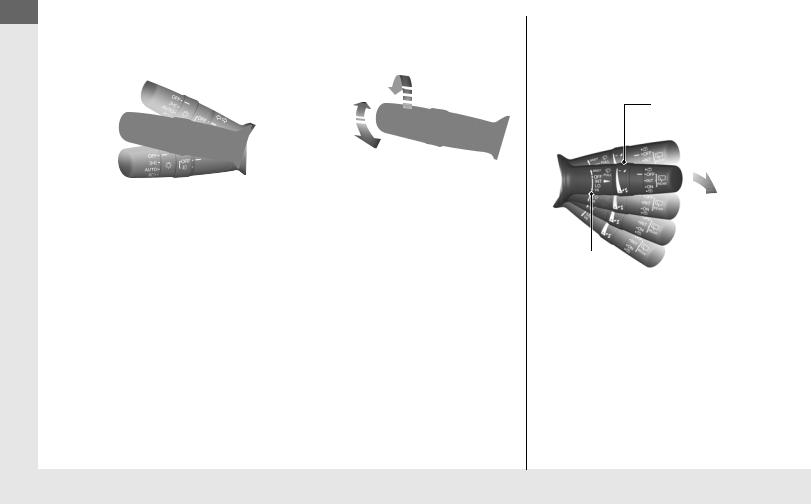
Guide Reference Quick
Controls (P 97)
Turn Signals (P 118) |
|
Lights (P 118) |
|
||
Turn Signal Control Lever |
|
Light Control Switches |
Right |
|
|
|
|
High Beam |
|
|
Low Beam |
|
|
Flashing |
Left |
|
|
|
|
|
Wipers and Washers
(P 121)
Wiper/Washer Control Lever
Adjustment Ring
 : Long Delay
: Long Delay
 : Short Delay
: Short Delay
Pull toward you to spray washer fluid.
MIST
OFF
INT: Low speed with intermittent LO: Low speed wipe
HI: High speed wipe
10
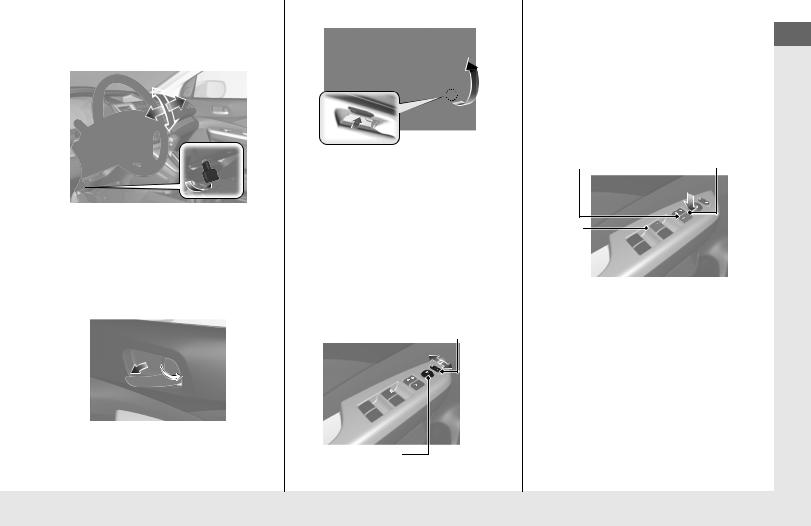
Steering Wheel (P 125)
●To adjust, pull the adjustment lever towards you, adjust to the desired position, then lock the lever back in place.
Unlocking the Front Doors from the Inside
(P 104)
●Pull either front door inner handle to unlock and open it at the same time.
Tailgate (P 110)
●With all the doors unlocked, push the tailgate release button on the tailgate to open it.
Power Door Mirrors
(P 127)
●With the ignition switch in ON w, move the selector switch to L or R.
●Push the appropriate edge of the adjustment switch to adjust the mirror.
Selector Switch
Adjustment Switch
Power Windows (P 114)
●With the ignition switch in ON w, open and close the power windows.
●If the power window lock button is in the off position, each passenger's window can be opened and closed with its own switch.
●If the power window lock button is in the on position (indicator is on), each passenger's window switch is disabled.
Power Window Lock Button Indicator
Window
Switch
Guide Reference Quick
11
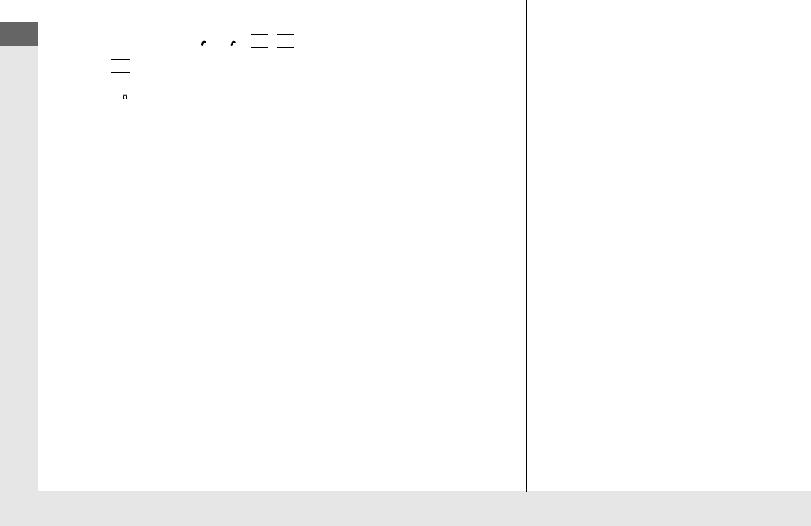
Guide Reference Quick
Heating and Cooling System* (P 148)
●Rotate the fan control dial to adjust the fan speed.
●Press the Mode buttons ( /
/  /
/ 
 /
/ 
 ) to select the vents air flows from.
) to select the vents air flows from.
●Rotate the temperature control dial to adjust the temperature.
●Use the 


 button for maximum cool setting.
button for maximum cool setting.
●Rotate the fan control dial to OFF to turn the system off.
● Press the  button to defrost the windshield.
button to defrost the windshield.



 Button
Button
 Button
Button
 Button
Button
Fan Control 



Dial



 Button
Button
A/C (Air Conditioning) Button



 Button
Button

 (Windshield Defroster) Button
(Windshield Defroster) Button

 (Rear Window Defogger/
(Rear Window Defogger/
 Heated Mirror*) Button
Heated Mirror*) Button


 Temperature
Temperature
Control Dial


 (Recirculation) Button
(Recirculation) Button
Air flows from dashboard vents.
Air flows from floor and dashboard vents.
Air flows from floor vents.
Air flows from floor and windshield defroster vents.
12

Climate Control System* (P 151)
●Press the AUTO button to activate the climate control system.
●Press the  button to turn the system on or off.
button to turn the system on or off.
●Press the  button to defrost the windshield.
button to defrost the windshield.
Models with navigation system
The climate control system is voice operable. See the navigation system manual for complete details.
SYNC (Synchronized) Button
Driver's Side 

Temperature
Control Dial
 (On/Off) Button
(On/Off) Button



 /
/


 (Fan Control) Buttons
(Fan Control) Buttons
 (Windshield
(Windshield
Defroster) Button

 Passenger's Side
Passenger's Side
Temperature
Control Dial
AUTO Button

 (Rear Window Defogger/
(Rear Window Defogger/
 Heated Mirror*) Button
Heated Mirror*) Button


 (Recirculation) Button
(Recirculation) Button
A/C (Air Conditioning)
Button
MODE Control Button
Air flows from dashboard vents.
Air flows from floor and dashboard vents.
Air flows from floor vents.
Air flows from floor and windshield defroster vents.
Clock (P 98)
Models without navigation system
a Press the CLOCK (AUX) button until the displayed time begins flashing.
b Press Preset 4 (Hour) or 5 (Minute) to set the time. Press Preset 6 (Reset) to set the time to the nearest hour.
c Press the CLOCK button again to set the time.
To set the time to the nearest hour:
Press and hold the CLOCK button until the clock display begins to blink, then press the 6 (Reset) button.
Depending on the displayed time, the clock sets forward or backward.
Example:
1:06 will reset to 1:00 1:53 will reset to 2:00
Models with navigation system
The navigation system receives signals from GPS satellites, updating the clock automatically.
Guide Reference Quick
* Not available on all models |
13 |
|
|
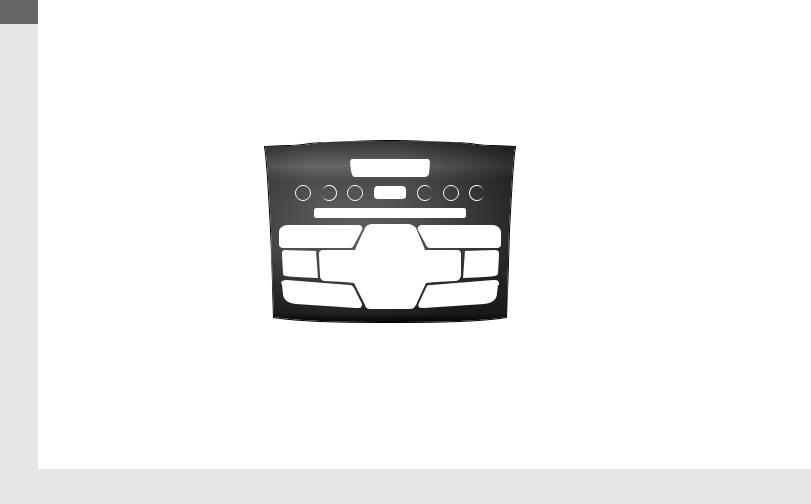
Guide Reference Quick
Features (P 155)
Audio System (P 156) For navigation system operation () See Navigation System Manual
Models without multi-information display (P 159)
SCAN Button



 Button
Button
FM Button
AM Button
SKIP/SEEK Button
(Power) Button |
CD Slot |
Preset Buttons (1-6) |
(CD Eject) Button |
AUX Button
CD Button
SKIP/SEEK Button
|
|
|
|
|
(Sound) Button |
|
|
|
|
|
|
SETUP Button |
|
|
|
|
|
|
|
|
|
|
|
||
|
|
|
|
|
|
|
|
|
|
|
||
|
|
|
|
|
Selector Knob |
|
|
|
|
|
Button |
|
|
|
|
|
|
|
|
|
|
|
|
||
14
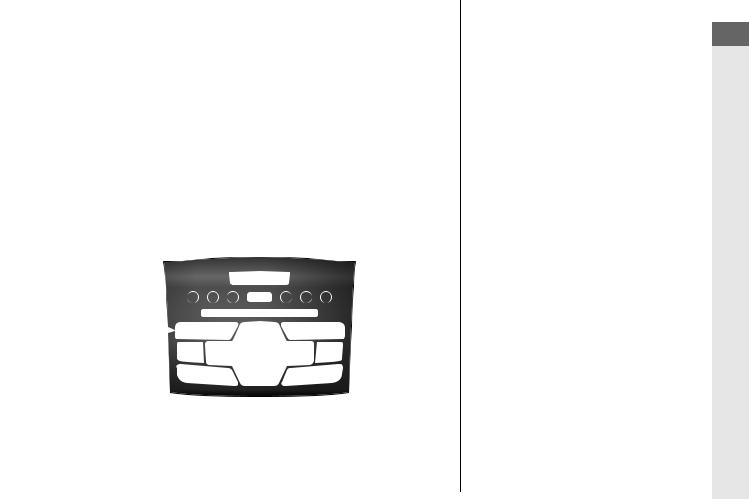
|
(P 173) |
● Audio Remote Controls (P 209) |
|
Models with multi-information display |
|||
|
(+ / (- Button



 /
/ 

 Button
Button
 Multi-Information Display
Multi-Information Display
|
|
|
SOURCE |
||
|
|
|
Button |
||
|
(Power) |
● |
+ / - Button |
||
|
|
Press and release to adjust the volume up/ |
|||
|
Button |
|
|||
|
|
down. |
|
||
|
CD Slot |
|
|
||
|
● SOURCE Button |
||||
Button |
Preset Buttons |
||||
|
Press and release to change the audio |
||||
AM Button |
|
||||
(1-6) |
|
||||
|
mode: FM1/FM2/AM/CD/XM1*/XM2*/AUX. |
||||
SCAN Button |
(CD Eject) |
● |
/ |
Button |
|
FM Button |
|||||
|
Radio:Press and release to change the |
||||
|
Button |
|
|||
|
|
|
preset station. |
||
|
|
|
|
||
Button* |
CD Button |
|
|
Press and hold to select the next or |
|
FM/AM Button* |
AUX Button |
|
|
previous strong station. |
|
|
CD/USB device: |
||||
|
|
|
|||
SKIP/SEEK Button |
SKIP/SEEK Button |
|
|
Press and release to skip to the |
|
|
|
beginning of the next song or |
|||
|
|
|
|
||
|
|
|
|
return to the beginning of the |
|
|
SETUP Button |
|
|
current song. |
|
|
|
|
Press and hold to change a folder. |
||
|
Button |
|
|
|
|
|
PHONE Button |
|
|
|
|
|
Selector Knob |
|
|
|
|
Guide Reference Quick
* Not available on all models |
15 |
|
|
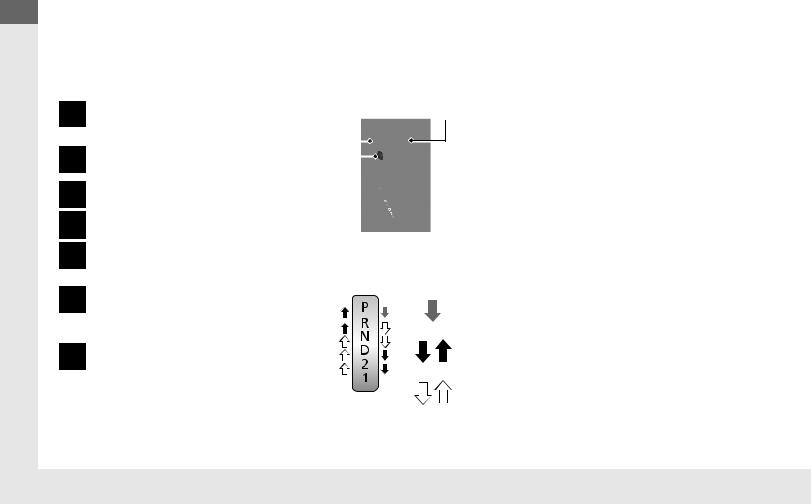
Guide Reference Quick
Driving (P 245)
Automatic Transmission (P 263)
●Shift to (P and depress the brake pedal when starting the engine.
●Shifting
Park |
Release Button |
||||
Turn off or start the engine. |
|||||
|
|
|
|
||
Transmission is locked. |
|
|
|
|
|
Reverse |
|
|
|
|
|
Neutral |
|
|
|
|
|
Transmission is not locked. |
|
|
|
|
|
(d Button |
|||||
Drive |
|||||
|
|
|
|
||
Normal driving. |
|
|
|
|
|
Second |
|
|
|
|
|
Used to increase engine braking |
|
|
|
|
|
(the transmission is locked in 2nd gear) |
|
|
|
|
|
First
Used to further increase engine braking (the transmission is locked in 1st gear)
Drive (D3)
Press the (d button while the shift lever is in
(D.
Used when:
•Going up or down hills •Towing a trailer in hilly terrain
Shift Lever
Depress the brake pedal and press the release button to move out of (P.
Press the release button to move the shift lever.
Move the shift lever without pressing the release button.
16
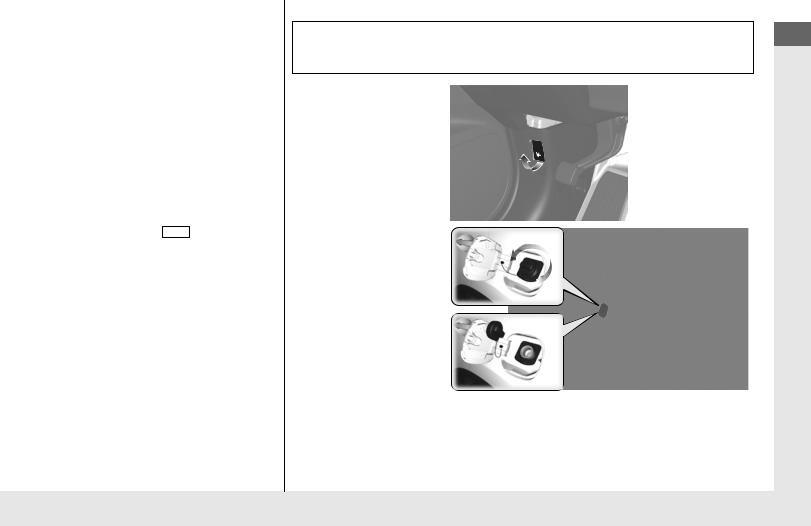
VSA® OFF Button (P 269)
●The vehicle stability assist (VSA®) system helps stabilize the vehicle during cornering, and helps maintain traction while accelerating on loose or slippery road surfaces.
●VSA® comes on automatically every time you start the engine.
●To turn VSA® on or off, press and hold the button until you hear a beep.
Cruise Control (P 265)
●Cruise control allows you to maintain a set speed without keeping your foot on the accelerator pedal.
●To use cruise control, press the CRUISE button, then press –/SET once you have received the desired speed (above 25 mph or 40 km/h).
Tire Pressure Monitoring
System (TPMS) (P 270)
●TPMS monitors tire pressure.
●TPMS is turned on automatically every time you start the engine.
Refueling (P 279)
Fuel recommendation: Unleaded gasoline with a pump octane number 87 or higher required
Fuel tank capacity: 15.3 US gal (58 L)
a Pull the fuel fill door release handle.
b Turn the fuel fill cap slowly to remove the cap.
c Place the cap in the holder on the fuel fill door.
d After refueling, screw the cap back on until it clicks at least once.
Guide Reference Quick
17
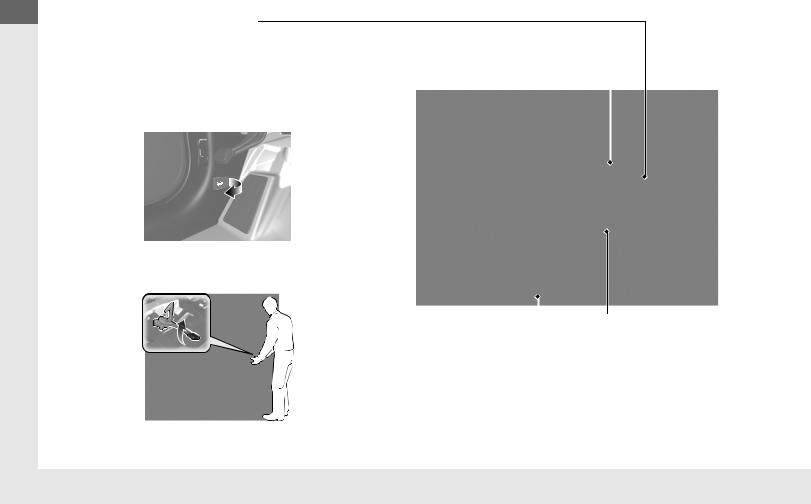
Guide Reference Quick
Maintenance (P 285)
Under the Hood (P 297)
● Check engine oil, engine coolant, and windshield washer |
Wiper Blades (P 316) |
|
|
fluid. Add when necessary. |
● Replace blades if they leave streaks |
||
● Check brake fluid. |
|||
across the windshield. |
|||
● Check the battery condition monthly. |
|||
|
|
||
a Pull the hood release handle under the corner of the |
|
|
|
dashboard. |
|
|
|
|
|
|
|
b Locate the hood latch lever, pull the lever up, and lift up the hood.
Tires (P 320) |
|
|
Lights (P 309) |
● Inspect tires and wheels regularly. |
● Inspect all lights regularly. |
||
● Check tire pressures regularly. |
|
||
● Install snow tires for winter |
|
||
driving. |
|
||
c When finished, close the hood and make sure it is firmly locked in place.
18

Handling the Unexpected (P 339)
Flat Tire (P 341)
●Park in a safe location and replace the flat tire with the compact spare tire in the cargo area.
Engine Won't Start
(P 347)
●If the battery is dead, jump start using a booster battery.
Indicators Come On
(P 353)
●Identify the indicator and consult the owner's manual.
Blown Fuse (P 357)
●Check for a blown fuse if an electrical device does not operate.
Overheating (P 351)
●Park in a safe location. If you do not see steam under the hood, open the hood, and let the engine cool down.
Emergency Towing
(P 360)
●Call a professional towing service if you need to tow your vehicle.
Guide Reference Quick
19
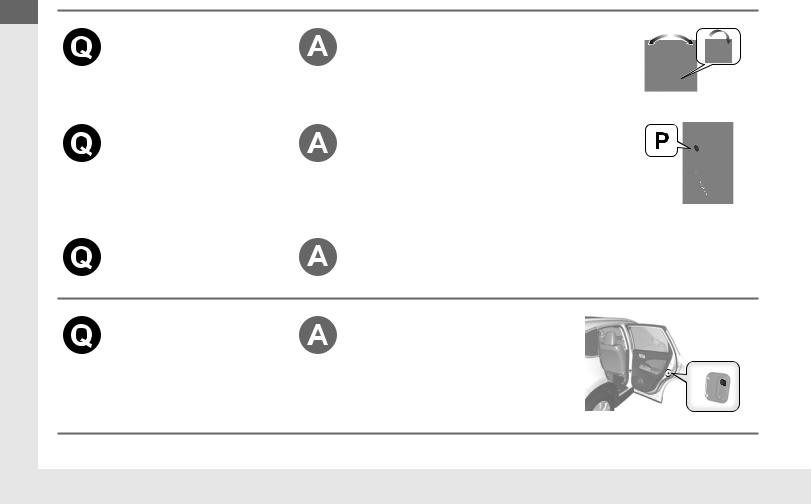
Guide Reference Quick
What to Do If
The ignition switch does |
● |
The steering wheel may be locked. |
not turn from 0 to q. |
● |
Try to turn the steering wheel left and right |
Why? |
|
while turning the ignition key. |
|
|
|
The ignition switch does |
The shift lever should be moved to P. |
|
not turn from q to 0 and |
|
|
I cannot remove the key. |
|
|
Why? |
|
|
|
|
|
Why does the brake pedal |
This can occur when the ABS activates, and does not indicate a |
|
pulsate slightly when |
problem. Apply firm, steady pressure on the brake pedal. Never |
|
applying the brakes? |
pump the brake pedal. |
|
The rear door cannot be opened from inside the vehicle. Why?
Check if the childproof lock is in the lock position. If so, open the rear door with the outside door handle. To cancel this function, push the lever to the unlock position.
20

Why do the doors lock |
If you do not open the doors within 30 seconds, the doors are |
|
after I unlocked the doors |
relocked automatically for security. |
|
using a remote |
|
|
transmitter? |
|
|
|
|
|
Why does the beeper |
The beeper sounds when: |
|
sound when I open the |
● |
The key is left in the ignition switch. |
driver's door? |
● |
The exterior lights are left on. |
|
|
|
Why does the beeper |
The beeper sounds when: |
|
sound when I start driving? |
● |
Driver and/or front passenger are not wearing their seat belts. |
|
● |
The parking brake lever is not fully released. |
|
|
|
Why do I hear a screeching |
The brake pads may need to be replaced. Have your vehicle |
|
sound when I apply the |
inspected by a dealer. |
|
brake pedal? |
|
|
|
|
|
Guide Reference Quick
21

Guide Reference Quick
California Proposition 65 Warning
WARNING: This product contains or emits chemicals known to the state of California to cause cancer and birth defects or other reproductive harm.
Event Data Recorders
This vehicle is equipped with an event data recorder (EDR).
The main purpose of an EDR is to record, in certain crash or near crash-like situations, such as an air bag deployment or hitting a road obstacle, data that will assist in understanding how a vehicle’s systems performed. The EDR is designed to record data related to vehicle dynamics and safety systems for a short period of time, typically 30 seconds or less. The EDR in this vehicle is designed to record such data as:
•How various systems in your vehicle were operating;
•Whether or not the driver and passenger safety belts were buckled/fastened;
•How far (if at all) the driver was depressing the accelerator and/or brake pedal; and,
•How fast the vehicle was traveling.
These data can help provide a better understanding of the circumstances in which crashes and injuries occur. NOTE: EDR data are recorded by your vehicle only if a non-trivial crash situation occurs; no data are recorded by the EDR under normal driving conditions and no personal data (e.g., name, gender, age, and crash location) are recorded. However, other parties, such as law enforcement, could combine the EDR data with the type of personally identifying data routinely acquired during a crash investigation.
To read data recorded by an EDR, special equipment is required, and access to the vehicle or the EDR is needed. In addition to the vehicle manufacturer, other parties, such as law enforcement, that have the special equipment, can read the information if they have access to the vehicle or the EDR.
The data belongs to the vehicle owner and may not be accessed by anyone else except as legally required or with the permission of the vehicle owner.
Service Diagnostic Recorders
This vehicle is equipped with service-related devices that record information about powertrain performance. The data can be used to verify emissions law requirements and/or help technicians diagnose and solve service problems. It may also be combined with data from other sources for research purposes, but it remains confidential.
California Perchlorate Contamination Prevention Act
The airbags, seat belt tensioners, and CR type batteries in this vehicle may contain perchlorate materials - special handling may apply. See www.dtsc.ca.gov/hazardouswaste/perchlorate/
As you read this manual, you will find information that is preceded by a NOTICE symbol. This information is intended to help you avoid
damage to your vehicle, other property, or the environment.
22

A Few Words About Safety
Your safety, and the safety of others, is very important. And operating this vehicle safely is an important responsibility.
To help you make informed decisions about safety, we have provided operating procedures and other information on labels and in this manual. This information alerts you to potential hazards that could hurt you or others.
Of course, it is not practical or possible to warn you about all the hazards associated with operating or maintaining your vehicle. You must use your own good judgement.
You will find this important safety information in a variety of forms, including:
●Safety Labels - on the vehicle.
●Safety Messages - preceded by a safety alert symbol 3 and one of three signal words: DANGER, WARNING, or CAUTION. These signal words mean:
3DANGER
3WARNING
3CAUTION
You WILL be KILLED or SERIOUSLY HURT if you don't follow instructions.
You CAN be KILLED or SERIOUSLY HURT if you don't follow instructions.
You CAN be HURT if you don't follow instructions.
●Safety Headings - such as Important Safety Precautions.
●Safety Section - such as Safe Driving.
●Instructions - how to use this vehicle correctly and safely.
This entire book is filled with important safety information - please read it carefully.
Guide Reference Quick
23
24

Safe Driving
You can find many safety recommendations throughout this chapter, and throughout this manual.
For Safe Driving |
|
......................................Side Airbags |
46 |
|
|
|
|
Important Safety Precautions ............. |
26 |
Side Curtain Airbags .......................... |
49 |
Important Handling Information......... |
28 |
Airbag System Indicators.................... |
50 |
Your Vehicle's Safety Features............ |
29 |
Airbag Care ....................................... |
53 |
Seat Belts |
|
Child Safety |
|
About Your Seat Belts........................ |
31 |
Protecting Child Passengers ............... |
54 |
Fastening a Seat Belt.......................... |
34 |
Safety of Infants and Small Children ....... |
56 |
Seat Belt Inspection............................ |
38 |
Safety of Larger Children ................... |
65 |
Airbags |
|
Exhaust Gas Hazard |
|
Airbag System Components............... |
39 |
Carbon Monoxide Gas....................... |
67 |
Types of Airbags ................................ |
42 |
Safety Labels |
|
Front Airbags (SRS) ............................ |
42 |
Label Locations .................................. |
68 |
25
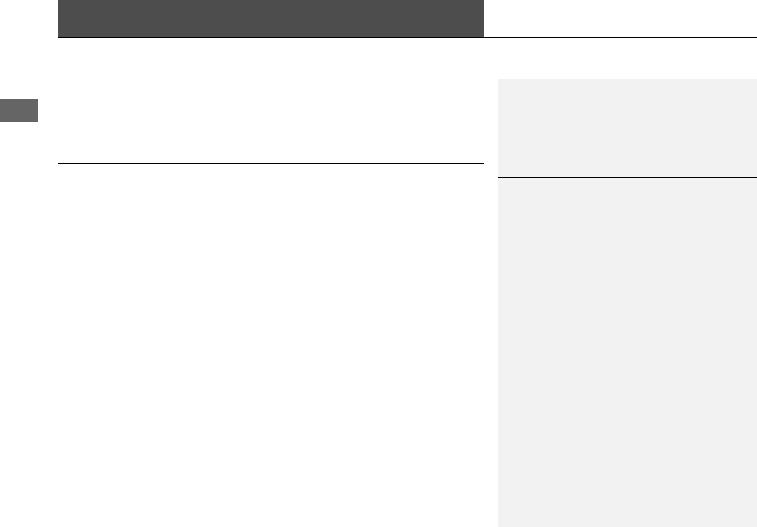
For Safe Driving
Driving Safe
The following pages explain your vehicle's safety features and how to use them properly. The safety precautions below are ones that we consider to be among the most important.
Important Safety Precautions
■ Always wear your seat belt
A seat belt is your best protection in all types of collisions. Airbags are designed to supplement seat belts, not replace them. So even though your vehicle is equipped with airbags, make sure you and your passengers always wear your seat belts, and wear them properly.
■ Restrain all children
Children age 12 and under should ride properly restrained in a back seat, not the front seat. Infants and small children should be restrained in a child seat. Larger children should use a booster seat and a lap/shoulder seat belt until they can use the belt properly without a booster seat.
■ Be aware of airbag hazards
While airbags can save lives, they can cause serious or fatal injuries to occupants who sit too close to them, or are not properly restrained. Infants, young children, and short adults are at the greatest risk. Be sure to follow all instructions and warnings in this manual.
■ Don't drink and drive
Alcohol and driving don't mix. Even one drink can reduce your ability to respond to changing conditions, and your reaction time gets worse with every additional drink. So don't drink and drive, and don't let your friends drink and drive, either.
1Important Safety Precautions
Some states, provinces and territories prohibit the use of cell phones other than hands-free devices by the driver while driving.
26

■ Pay appropriate attention to the task of driving safely
Engaging in cell phone conversation or other activities that keep you from paying close attention to the road, other vehicles, and pedestrians could lead to a crash. Remember, situations can change quickly, and only you can decide when it is safe to divert some attention away from driving.
■ Control your speed
Excessive speed is a major factor in crash injuries and deaths. Generally, the higher the speed, the greater the risk, but serious injuries can also occur at lower speeds. Never drive faster than is safe for current conditions, regardless of the maximum speed posted.
■ Keep your vehicle in safe condition
Having a tire blowout or a mechanical failure can be extremely hazardous.
To reduce the possibility of such problems, check your tire pressures and condition frequently, and perform all regularly scheduled maintenance.
uuFor Safe DrivinguImportant Safety Precautions
Driving Safe
27

Driving Safe
uuFor Safe DrivinguImportant Handling Information
Important Handling Information
Your vehicle has higher ground clearance than a passenger vehicle designed for use |
1Important Handling Information |
only on pavement. Higher ground clearance has many advantages for off-highway |
Failure to operate your vehicle correctly might result |
driving. It allows you to travel over bumps, obstacles, and rough terrain. It also |
in a crash or a rollover. |
provides good visibility so you can anticipate problems earlier. |
2 Precautions While Driving P. 261 |
|
2 Off-Highway Driving Guidelines P. 257 |
These advantages come at some cost. Because your vehicle is taller and rides higher off the ground, it has a higher center gravity making it more susceptible to tripping or roll over if you make abrupt turns. Utility vehicles have a significantly higher rollover rate than other types of vehicles. In a rollover crash, an unbelted person is significantly more likely to die than a person wearing a seat belt. As a reminder, make sure you and your passengers always wear seat belts.
28
